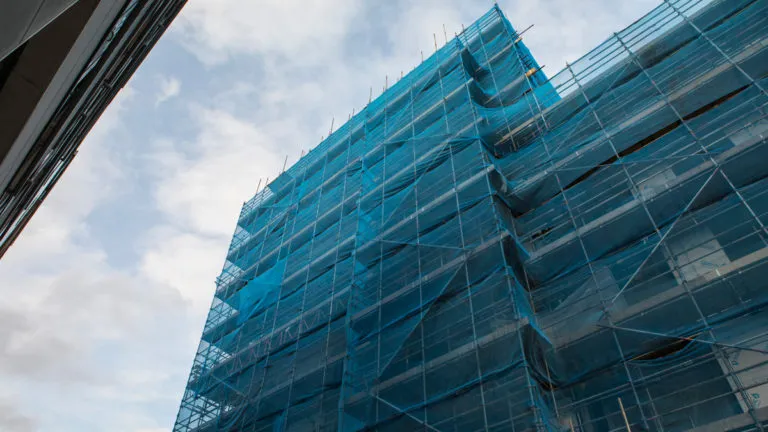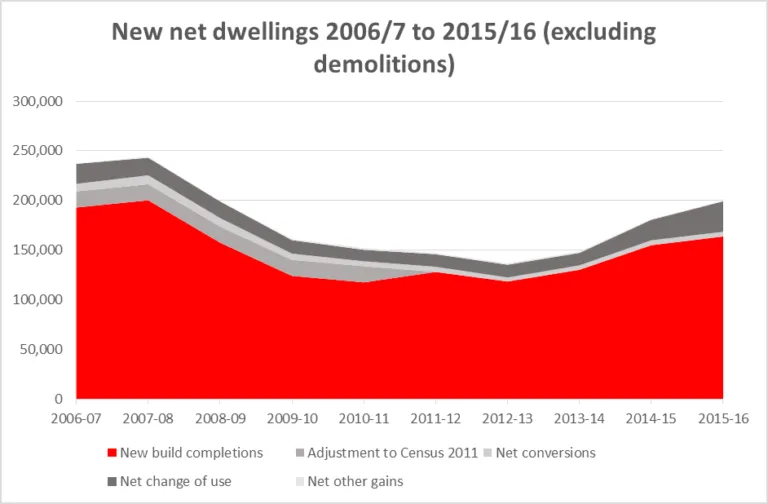Permitted Development Rights: A wolf in sheep’s clothing?
Published: by Marcus McPhillips

Figures on net additional dwellings
On Tuesday, the Department for Communities and Local Government (DCLG) released their latest figures on the number of net additional dwellings for 2015/16. Since 2012/13, the number of new net dwellings has been steadily increasing year-on-year – this year the figure stands at 189,650. This is encouraging (although we still have not broken 200,000 net additional dwellings in any year since the Global Financial Crisis of 2007/8).

Source: DCLG
Permitted Development Rights: What are they?
However, beneath this headline picture there is a trend which is less clearly positive. For the first time, DCLG now provide figures regarding the number of extra homes which came through the permitted development rights process. Introduced on a temporary basis in May 2013 (and made permanent in October 2015) permitted development rights are a type of planning permission which allow certain changes of use to be carried out without having to make a planning application. They are often used to change offices or industrial buildings into homes.
Permitted Development Rights: A particularly London trend?
In 2015/16, 13,879 extra homes came through the permitted development process, of which over a quarter were in London boroughs. Croydon (594) was the local authority with the highest number of extra homes coming from this source.
As shown below, of the top ten local authorities ordered by percentage of net extra homes in their area realised in 2015/16 through the permitted development process, only Dudley is not in London or the surrounding areas. London boroughs Richmond-upon-Thames and Sutton actually got a majority of their extra homes from this route, which is quite staggering.
| Local Authority | % of net dwellings realised through permitted development 2015/16 |
| Richmond upon Thames | 59% |
| Sutton | 52% |
| Crawley | 49% |
| Watford | 47% |
| South Bucks | 46% |
| Southend-on-Sea UA | 46% |
| Dudley | 43% |
| Merton | 43% |
| Redbridge | 42% |
| Basingstoke and Deane | 40% |
Permitted Development Rights: So why the concern?
National trends in employment such as greater levels of home working, and retail habits moving from city centres to out-of-town shopping centres (and online) provide opportunities for changes of use in particular local areas. It is also not possible to assess the dynamics of the development process in each specific local area, and whether in the absence of the permitted development policy, more new build homes would have come forward.
However, the continued existence within the permitted development process of a loophole which prevents local authorities from being able to enforce affordable housing requirements is a real concern, particularly within the capital. As Conservative MP for Cities of London and Westminster Mark Field succinctly put it when the policy was first introduced:
_‘_Converting offices to homes in central London areas will only lead to expensive homes, not affordable homes, at a cost to the business community – which I think negates exactly what the government is trying to achieve in terms of housing and growth.’
The sustainability of this policy is also suspect: there are only so many offices you can change the use of, and then what? But even in the short term, any usage of permitted development in order to bypass affordable housing requirements is to be condemned. By crowding out the development of new homes, some of which would be affordable, development like this will not help but rather hinder attempts to adequately house all of us. The fact the usage of permitted development is particularly prevalent in London, where the need for genuinely affordable housing is most intense right now, makes any exploitation of this loophole for short-term gain even more concerning.
Changes of use, and the usage of permitted development rights, can contribute to bringing forward the new homes which England desperately needs to tackle the housing shortage. However, a sustainable solution will not come through office to residential conversions playing more than a minor role. Ramping up the supply of new build housing, including plenty of genuinely affordable homes, is still the best show in town.